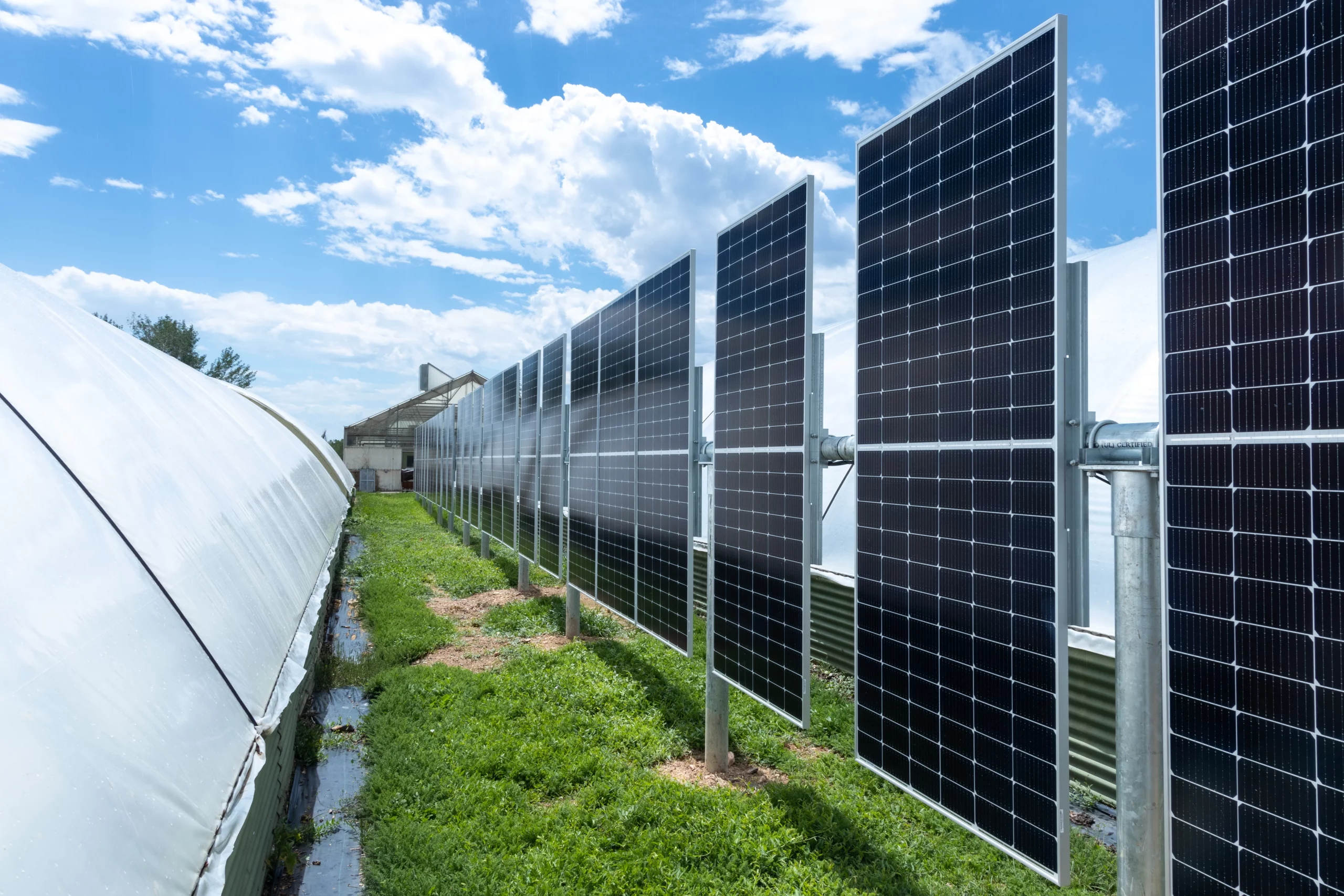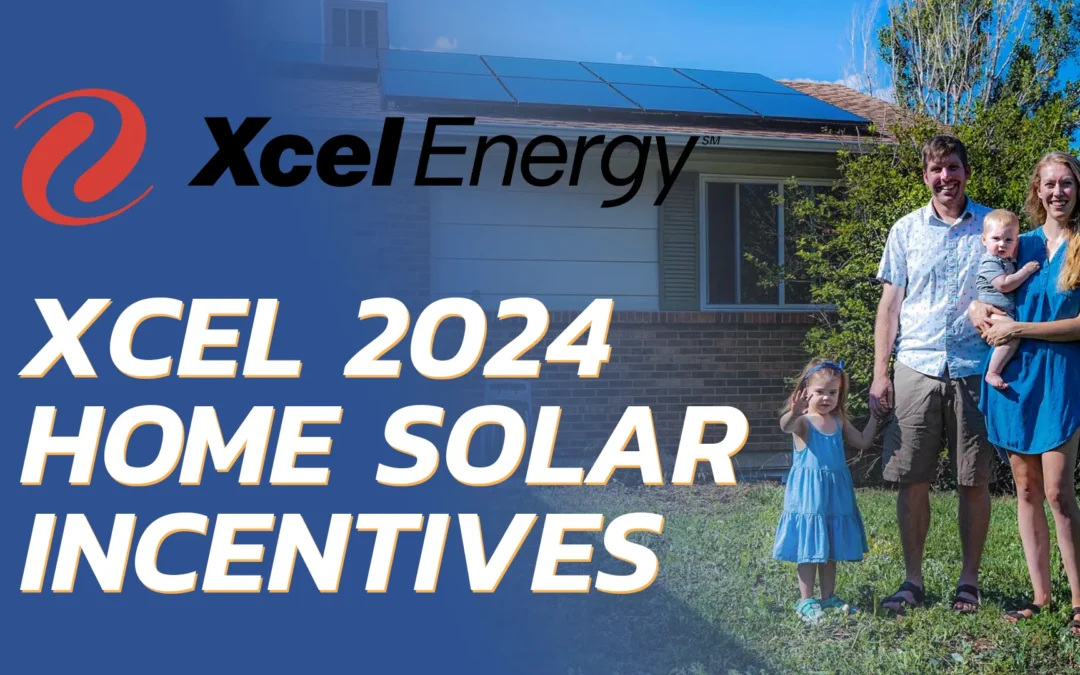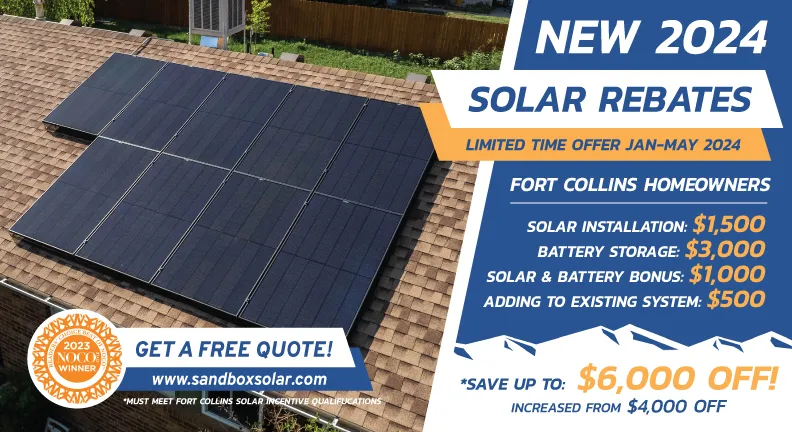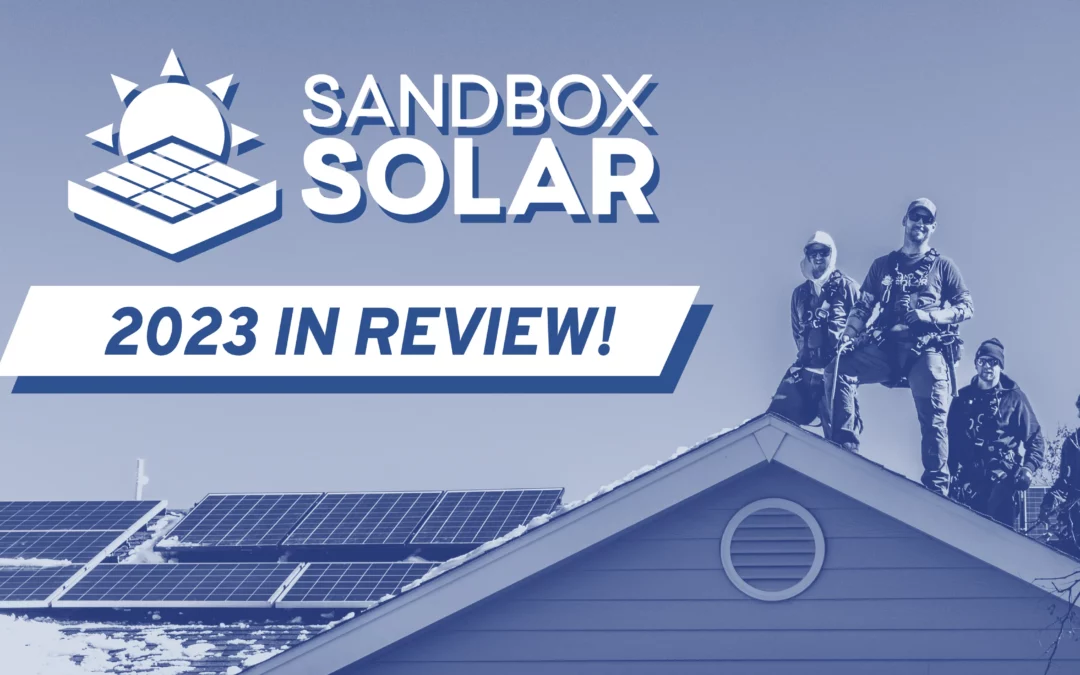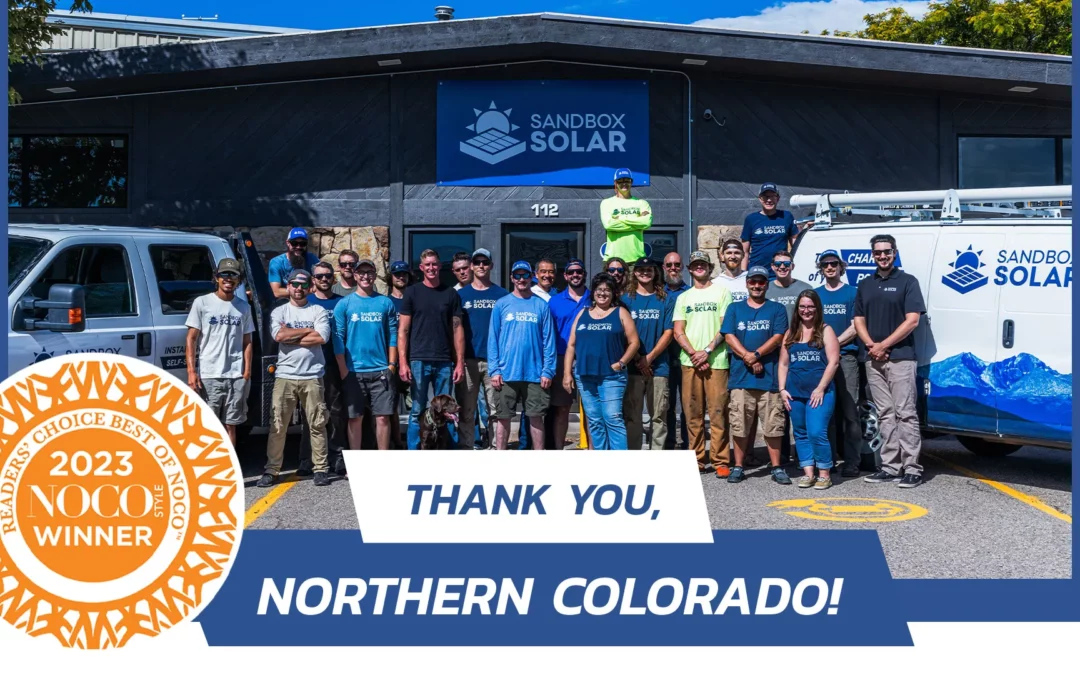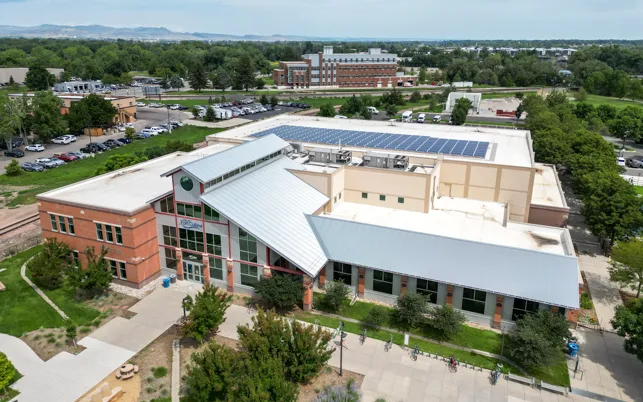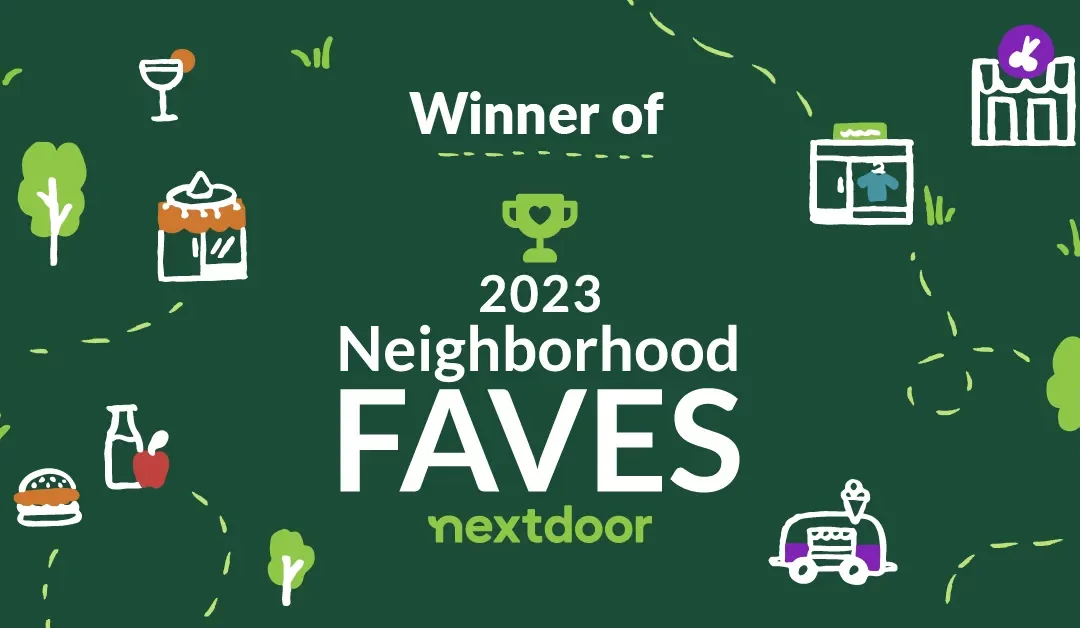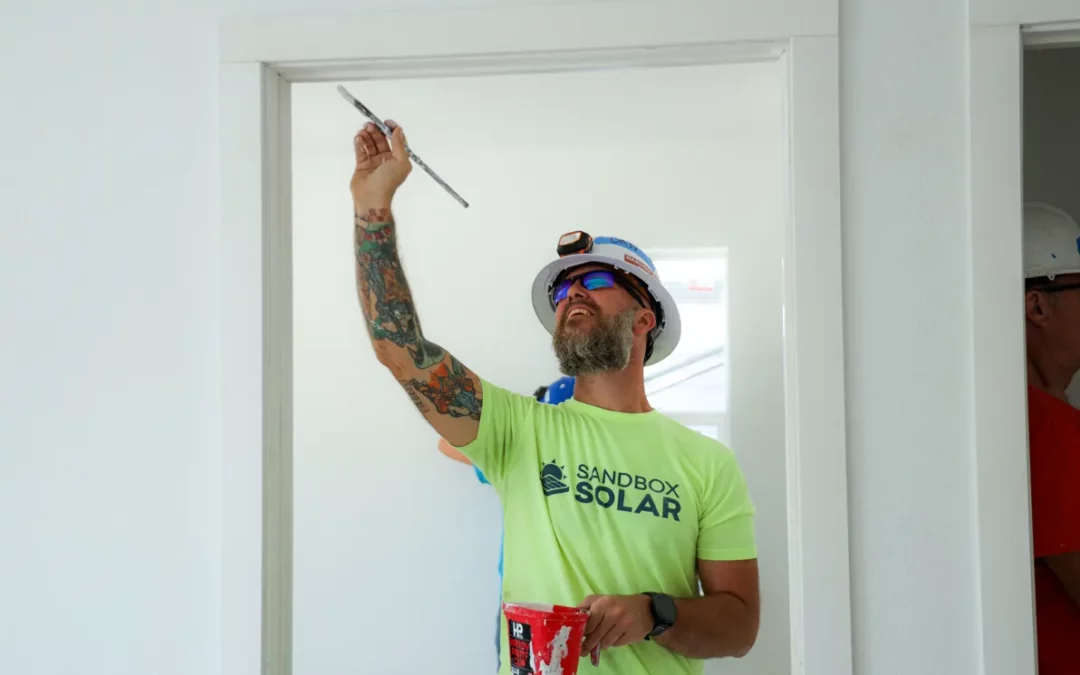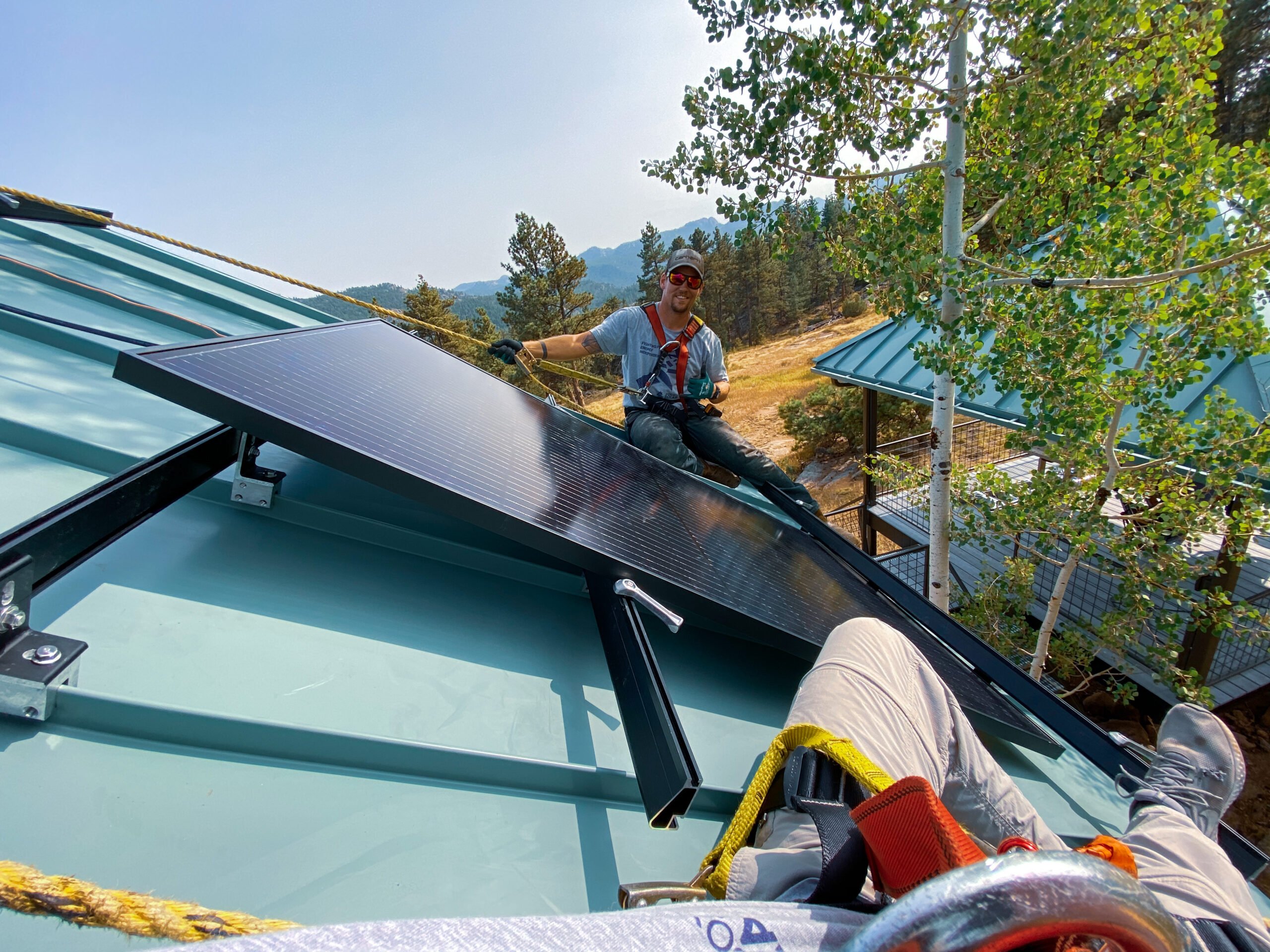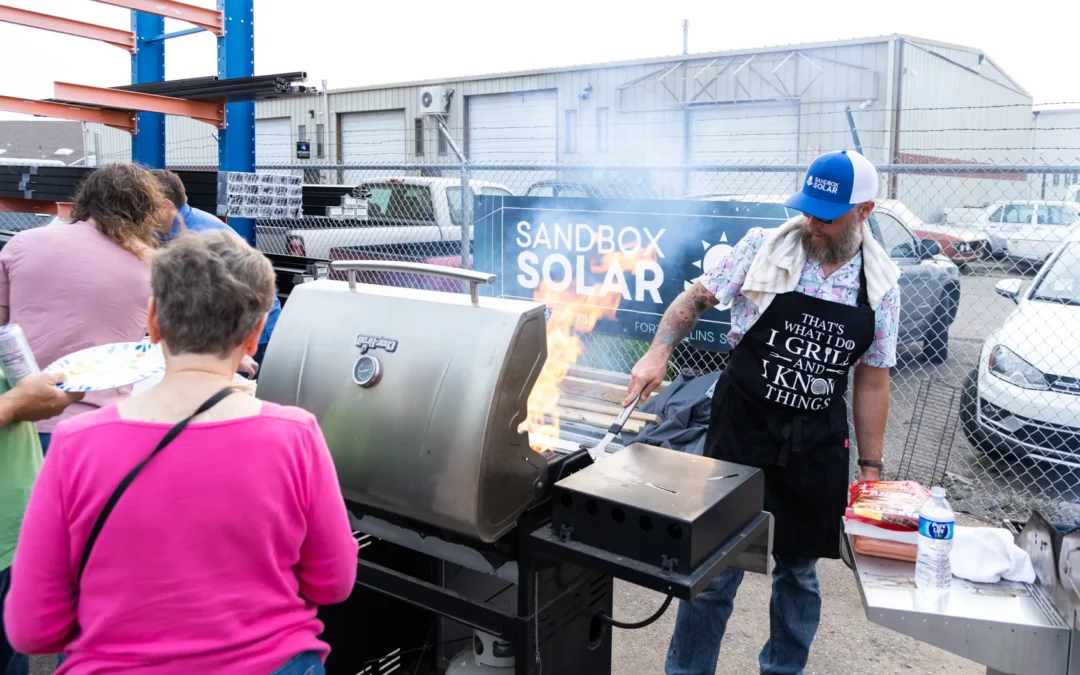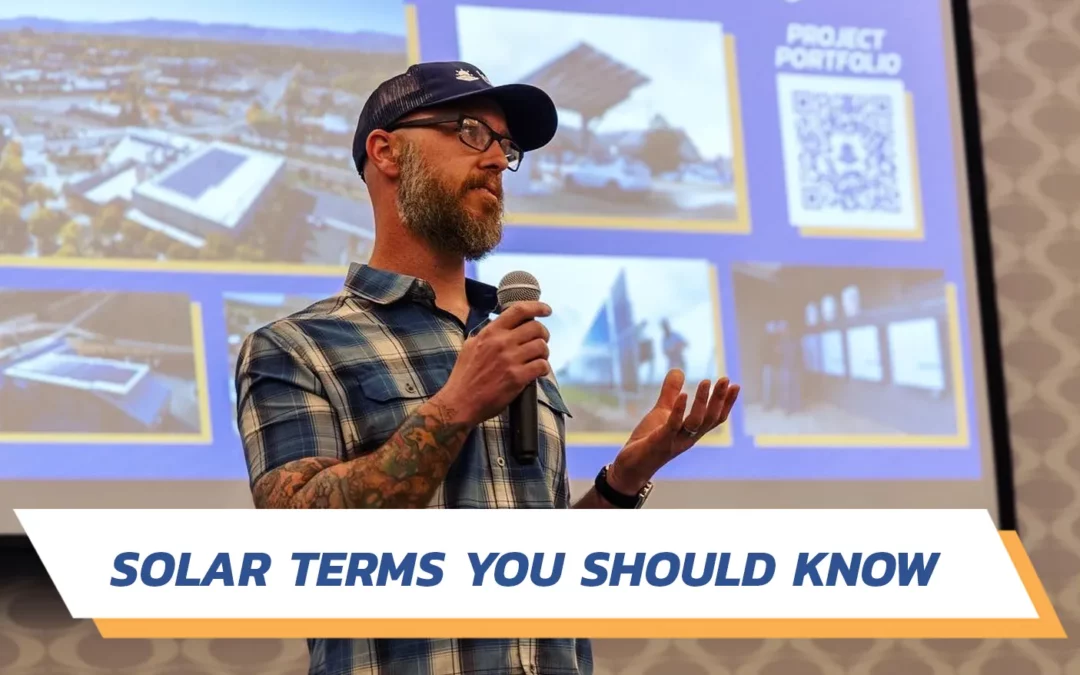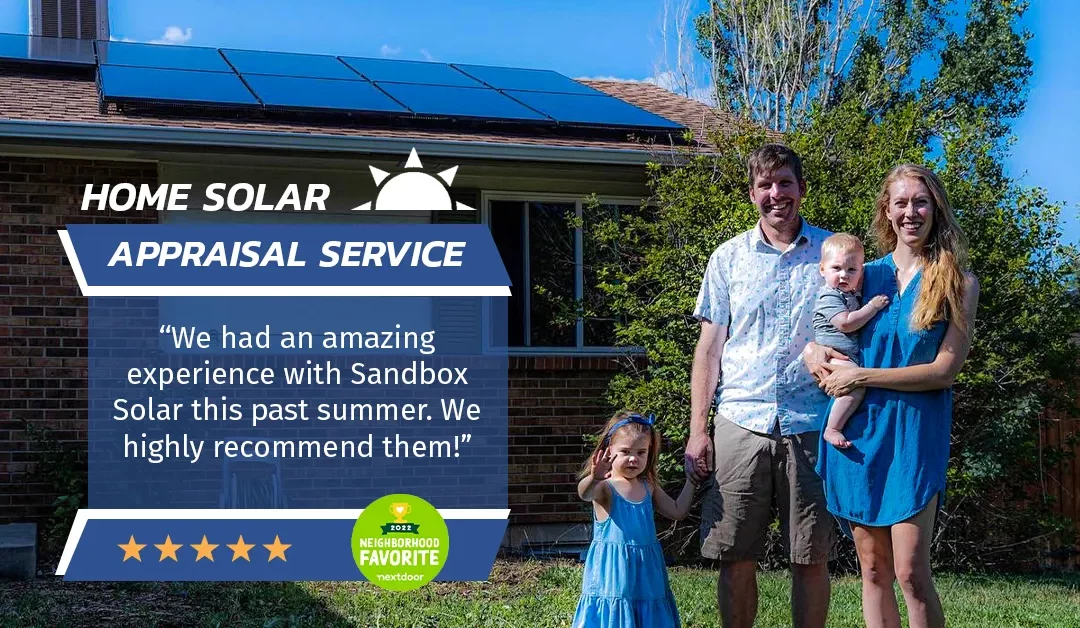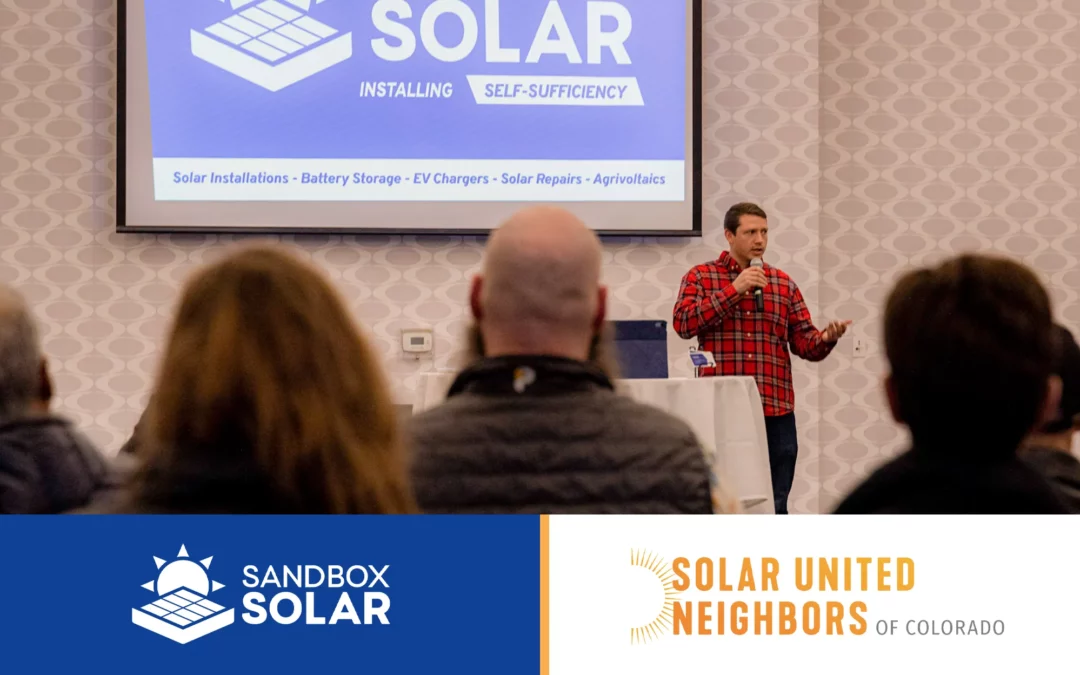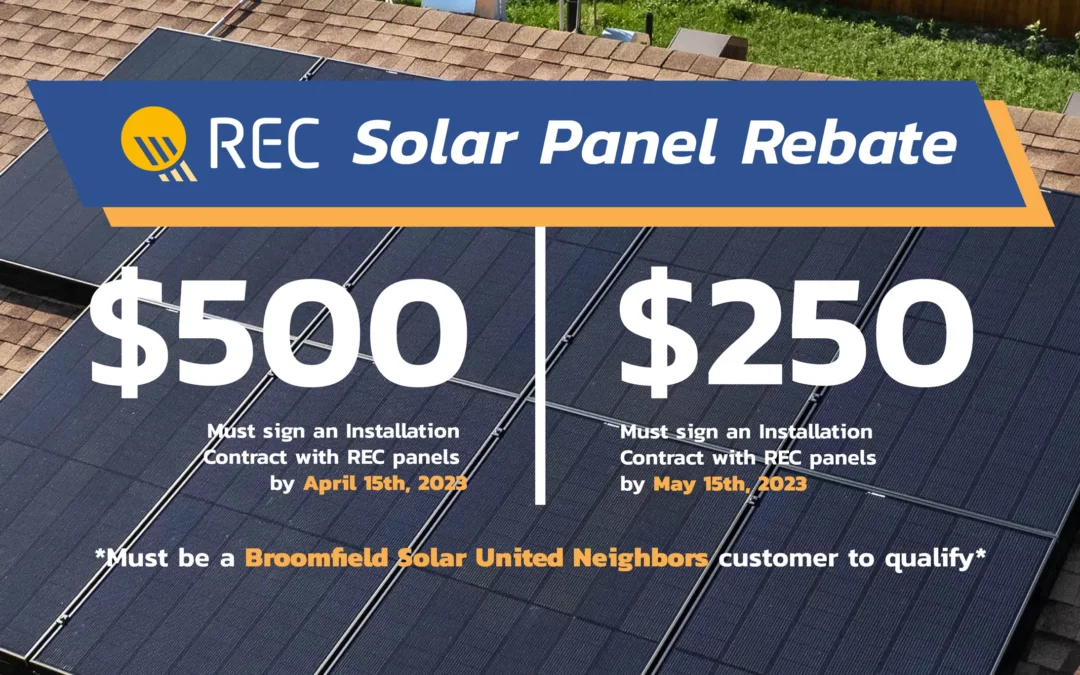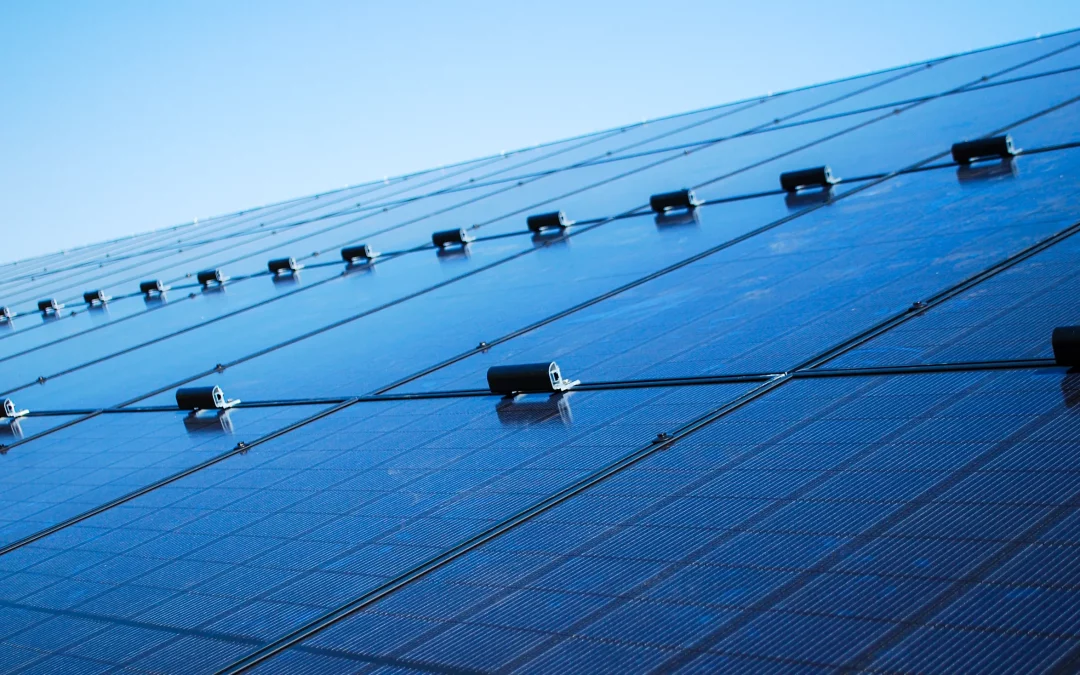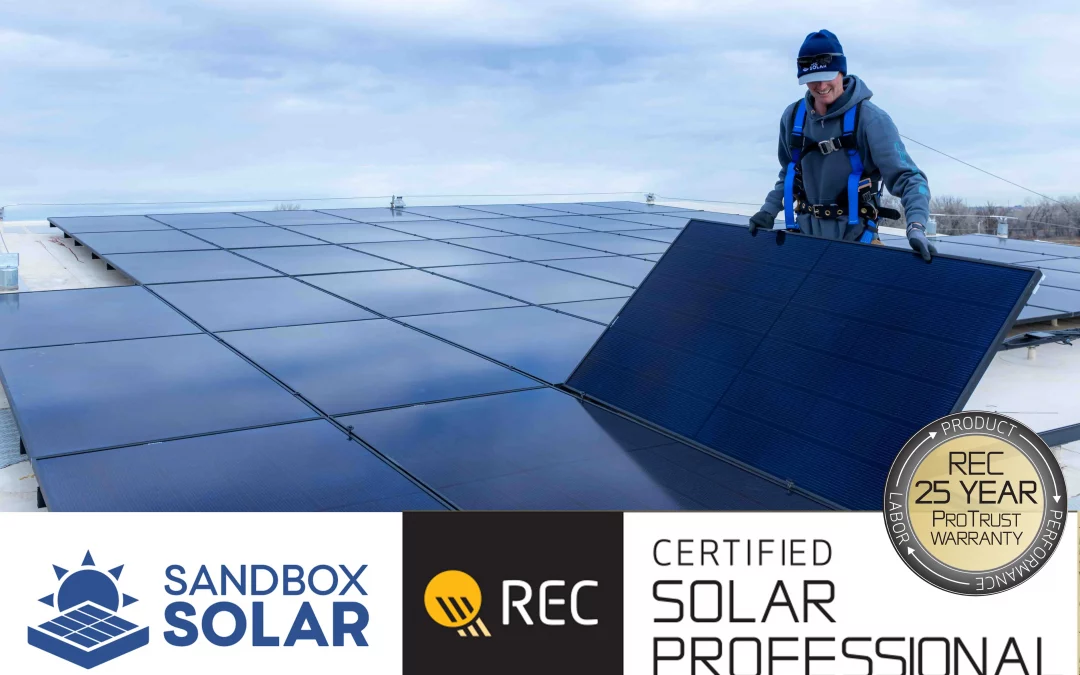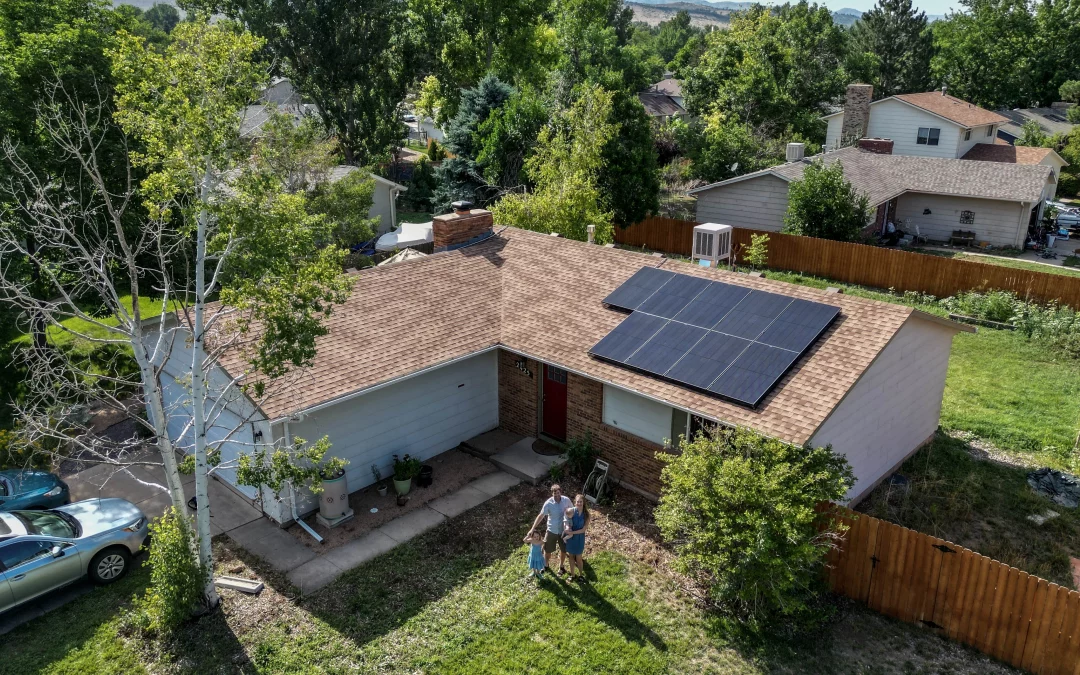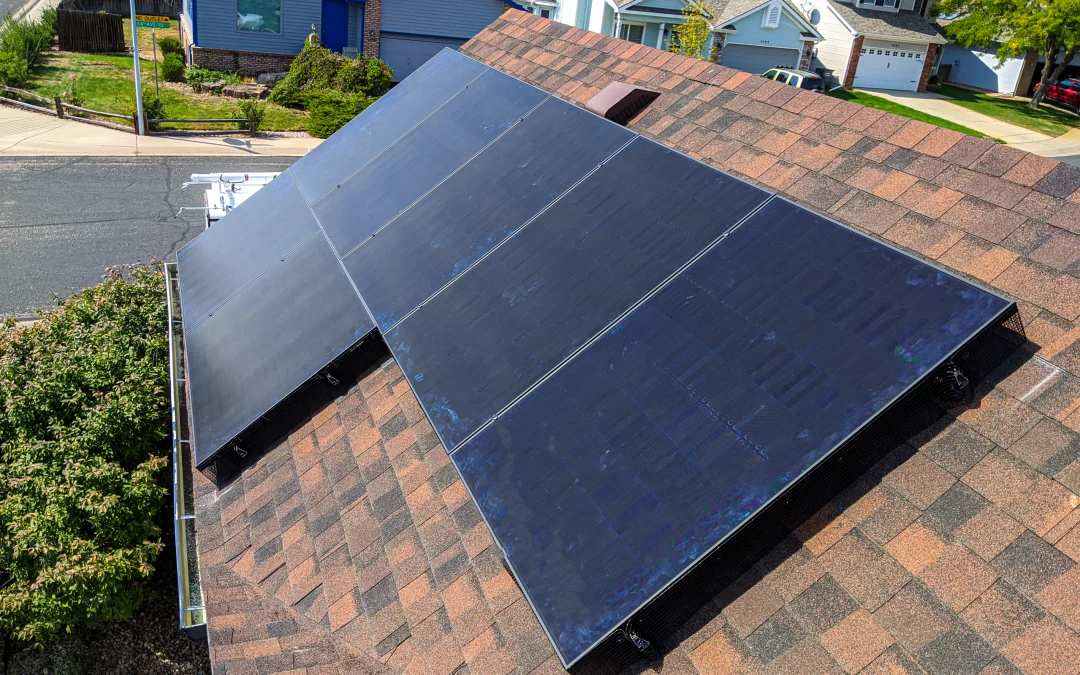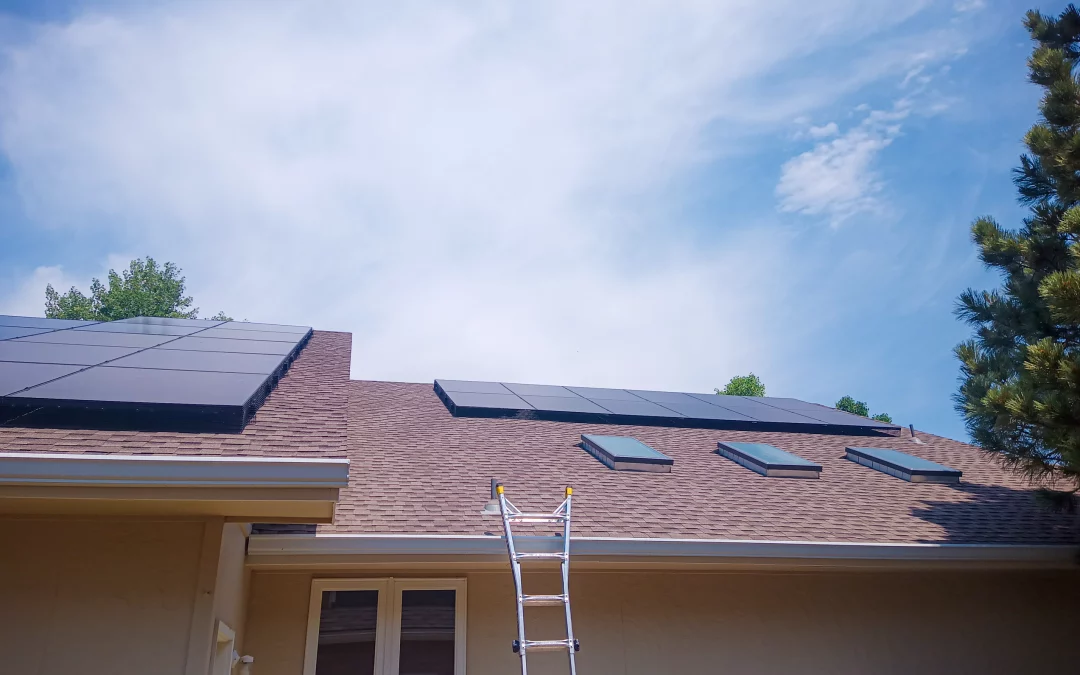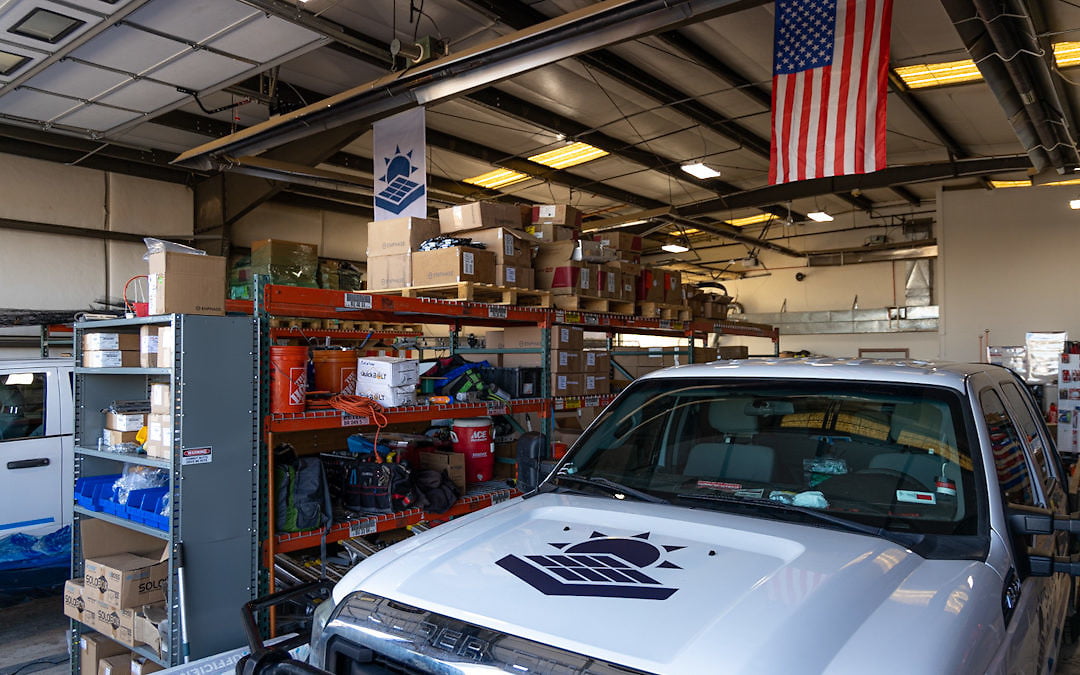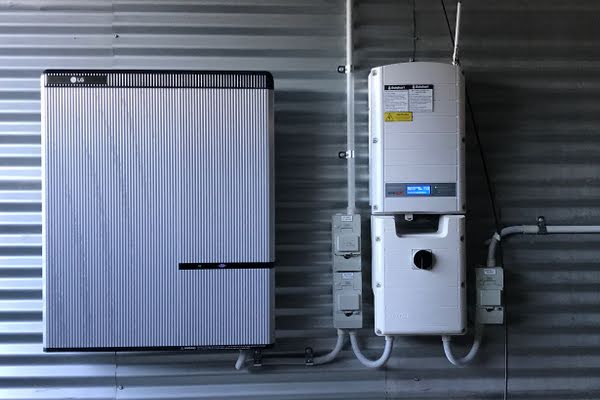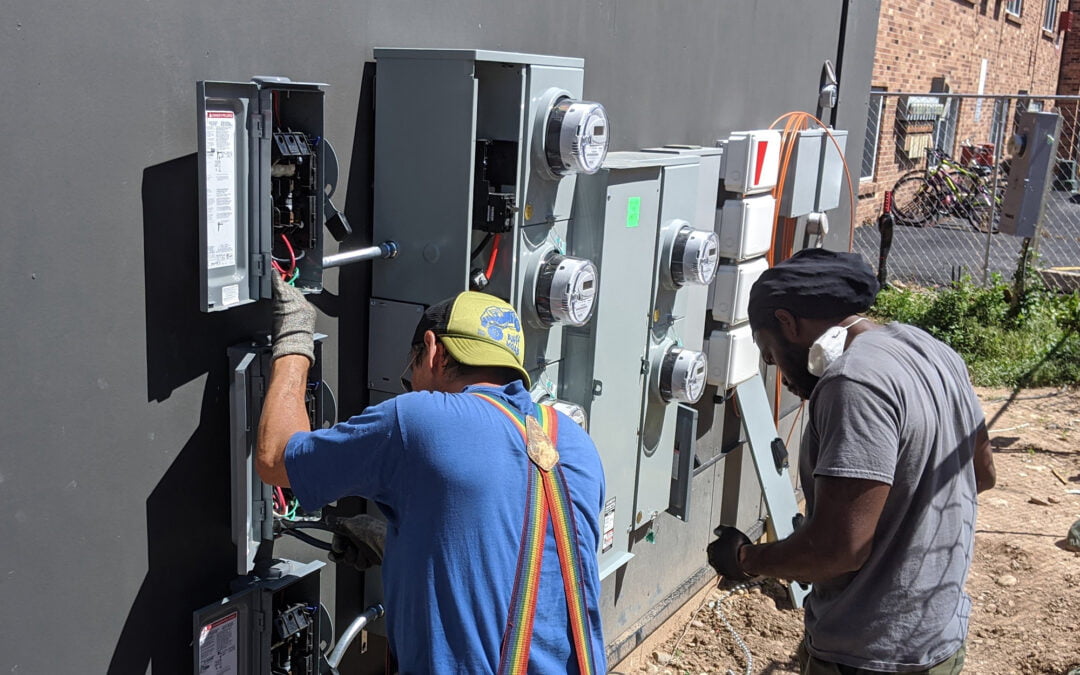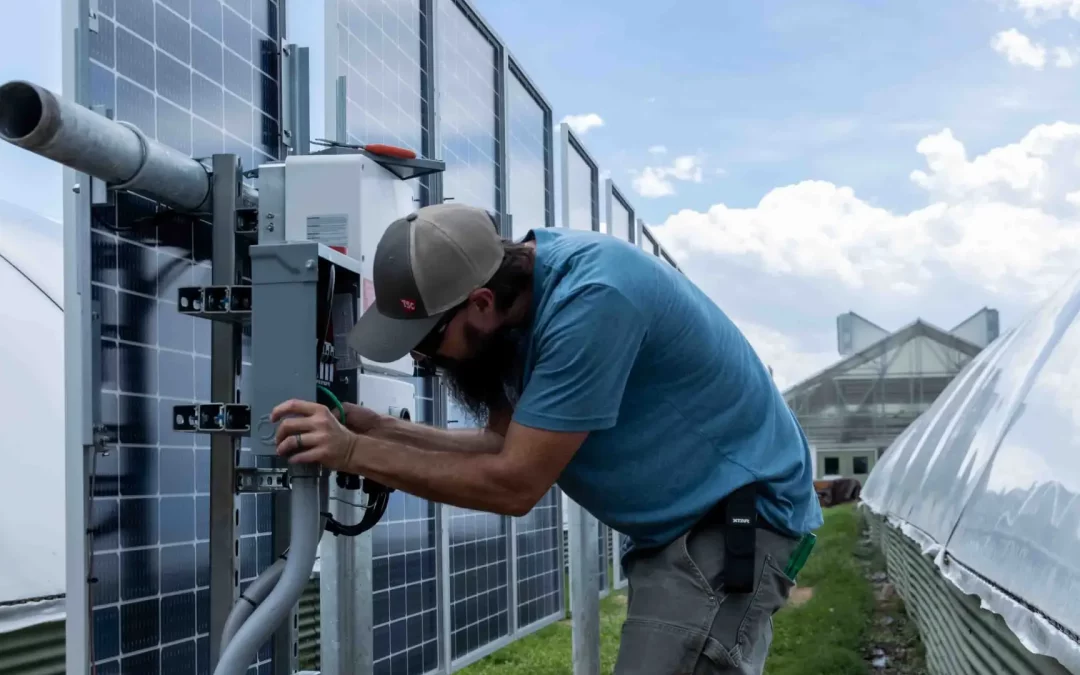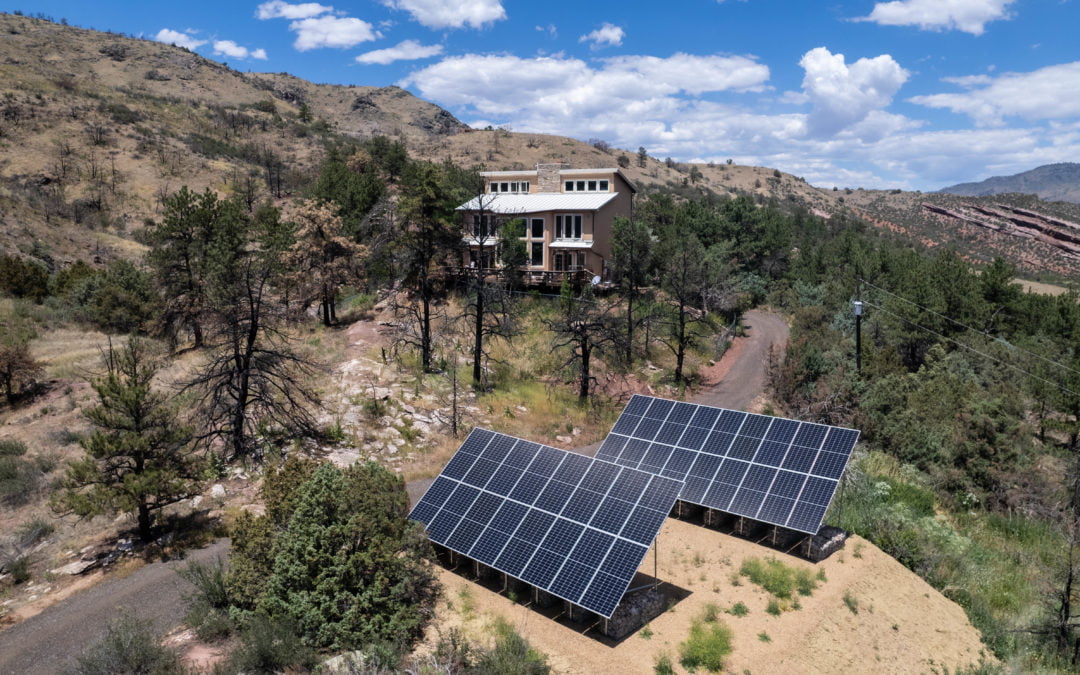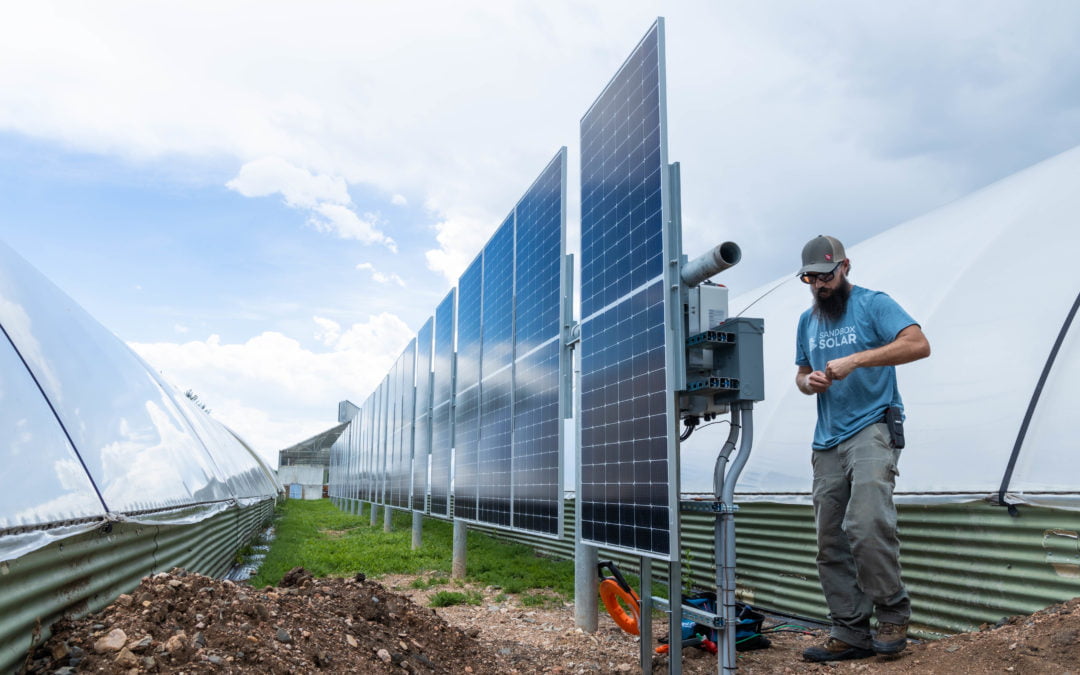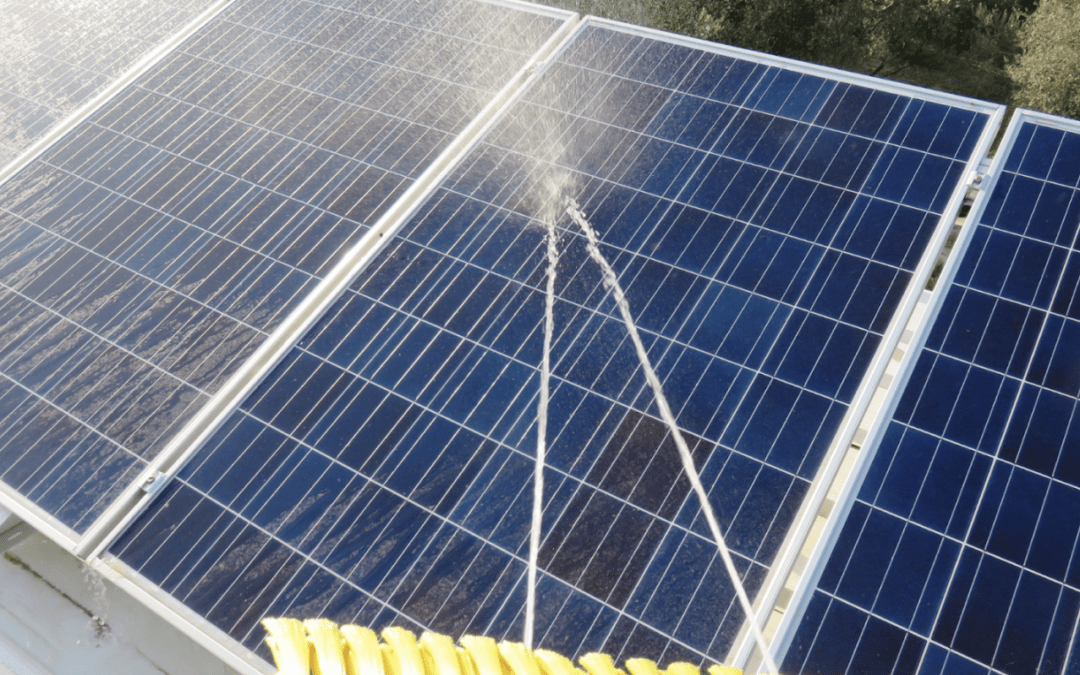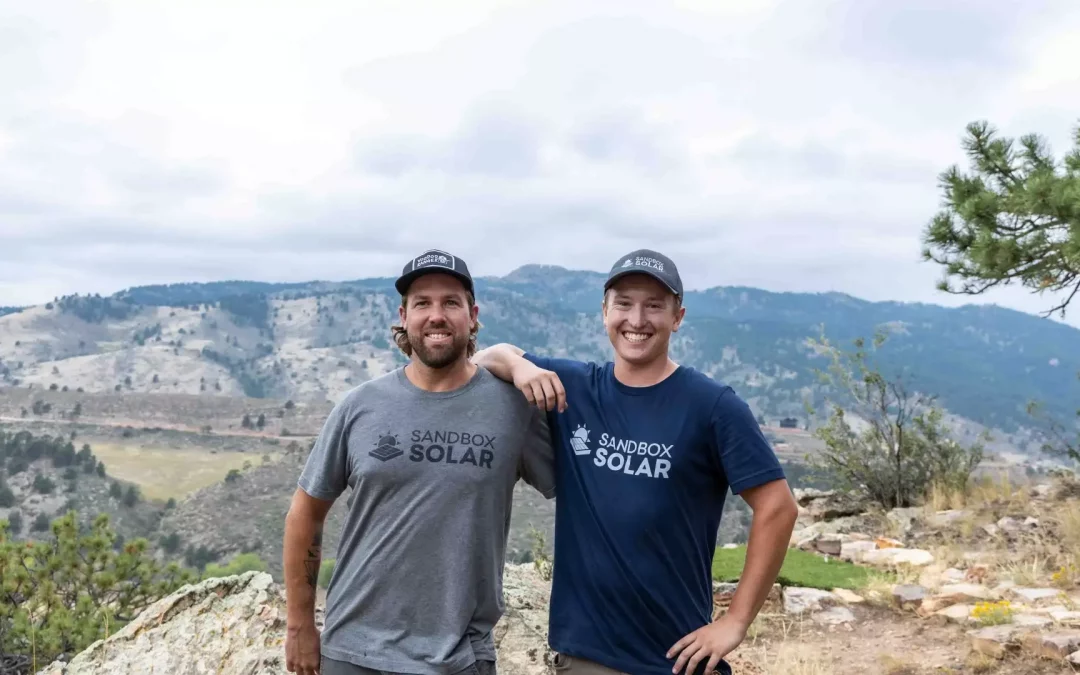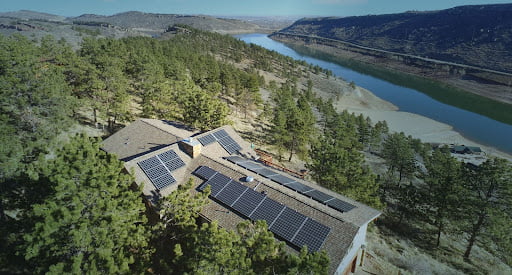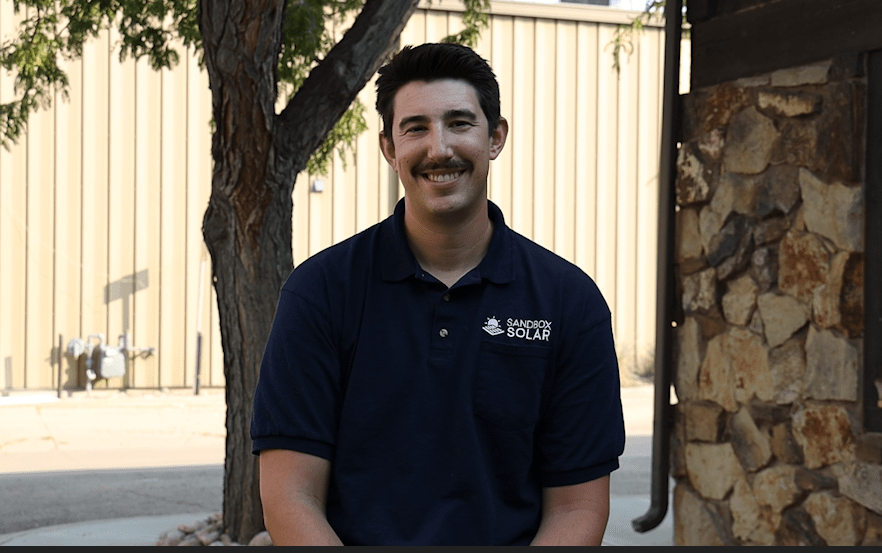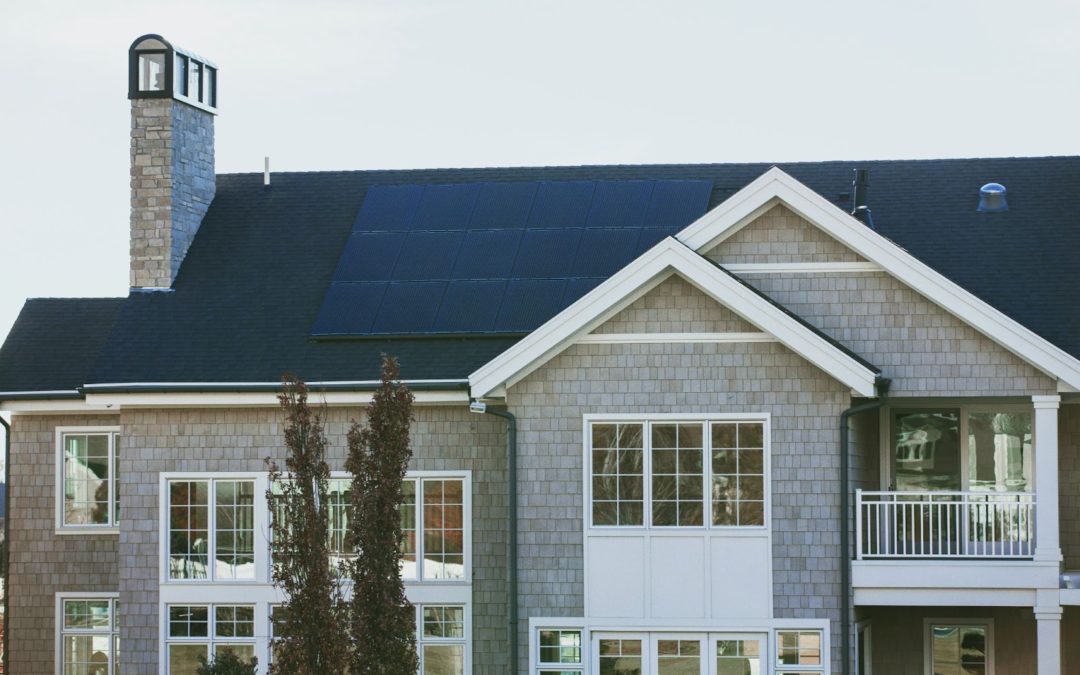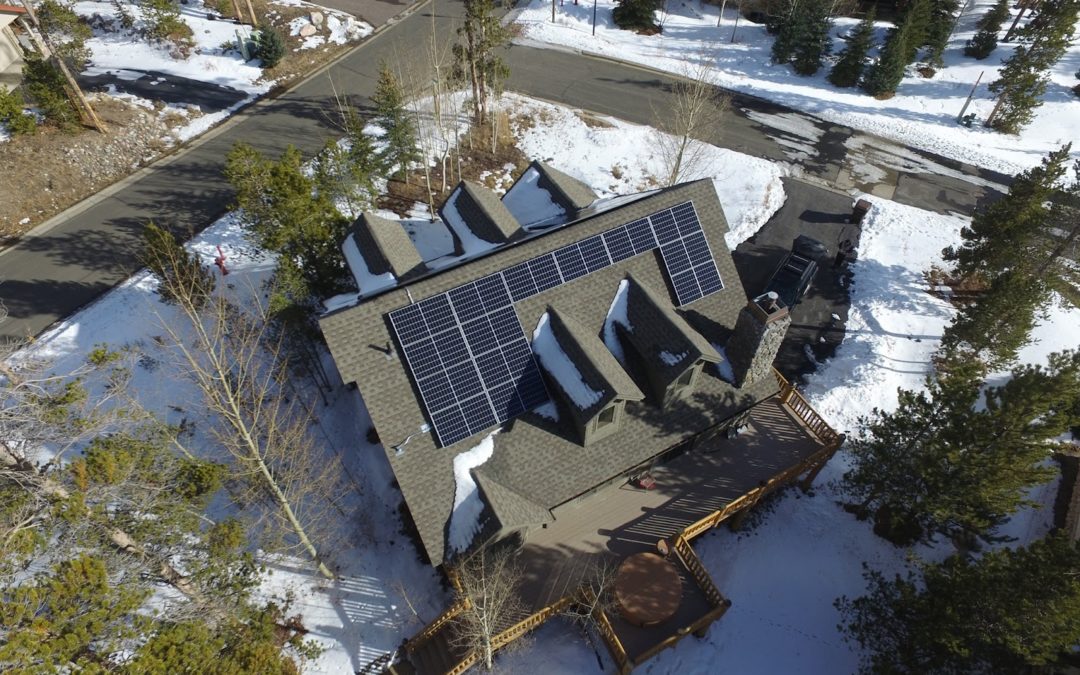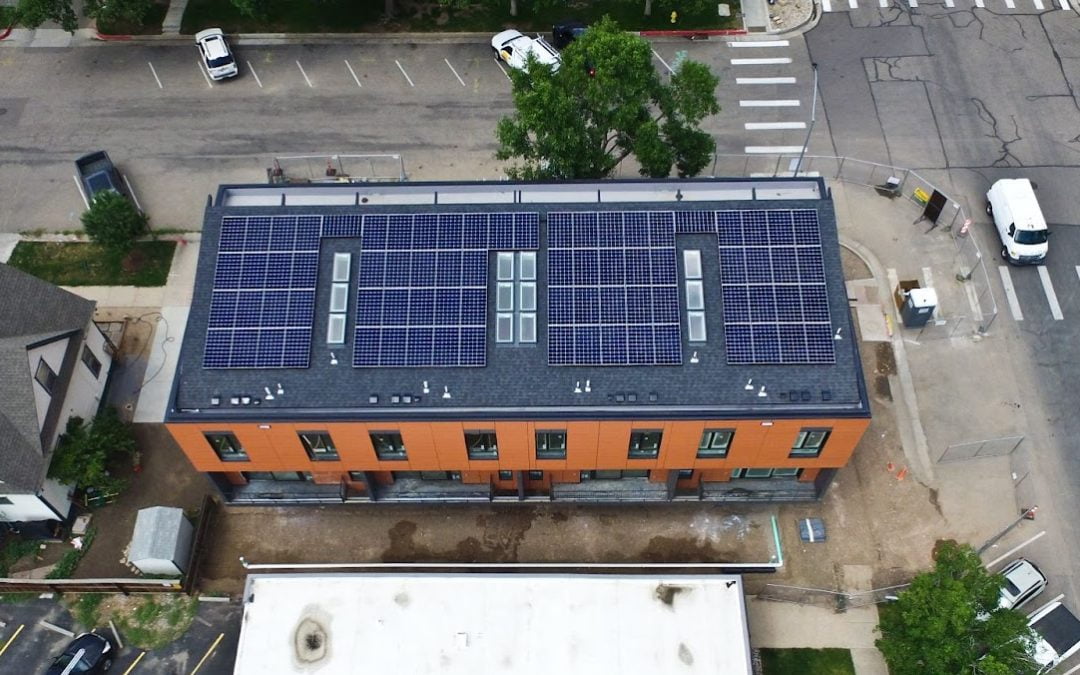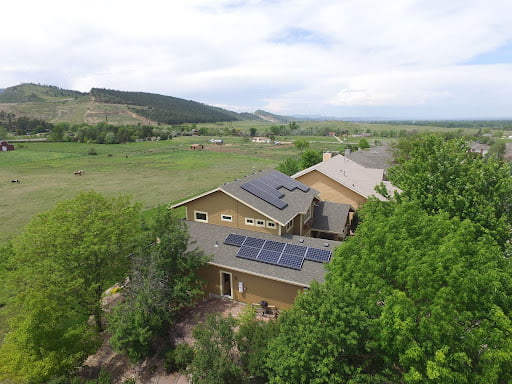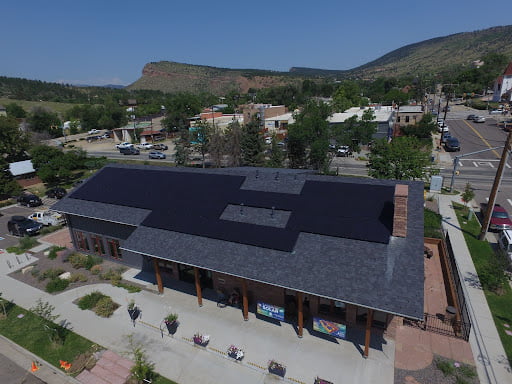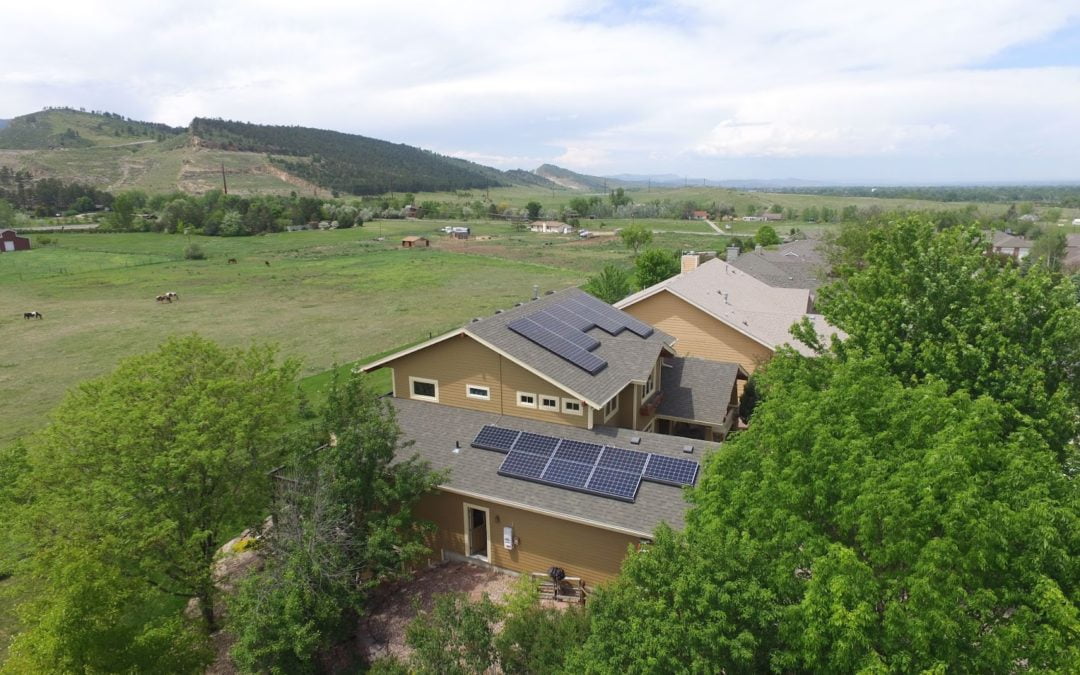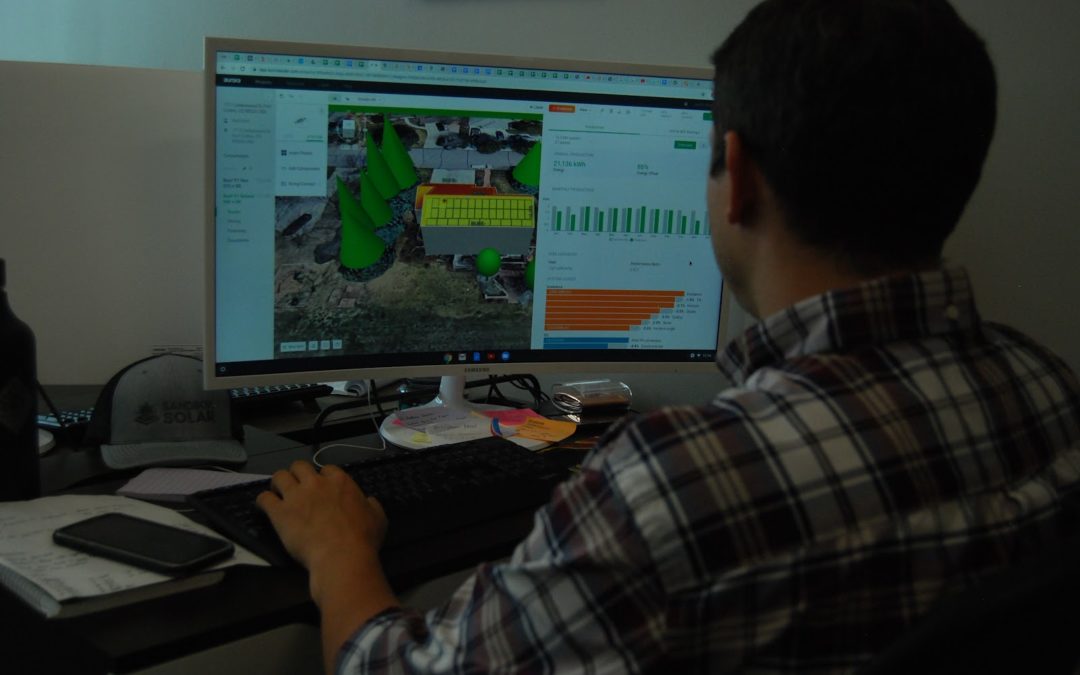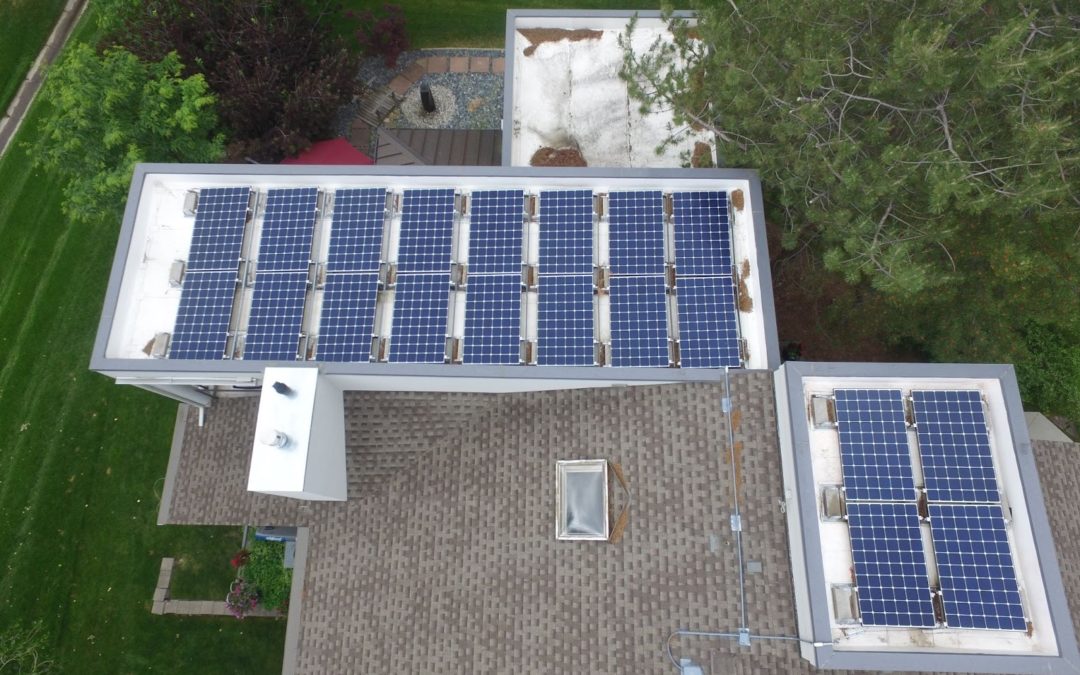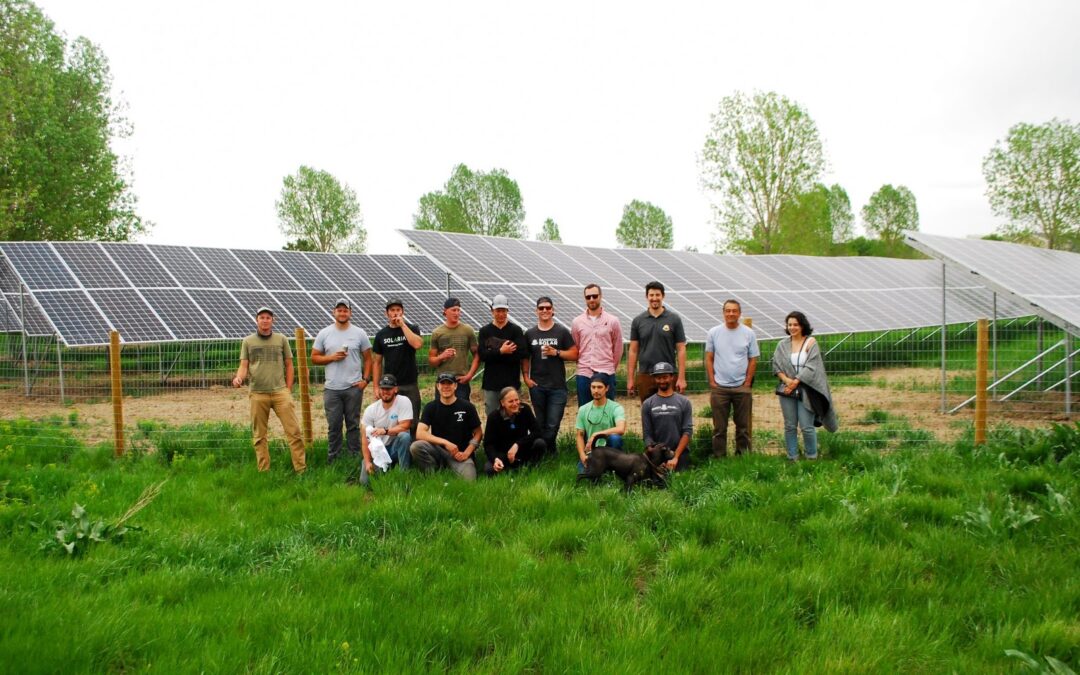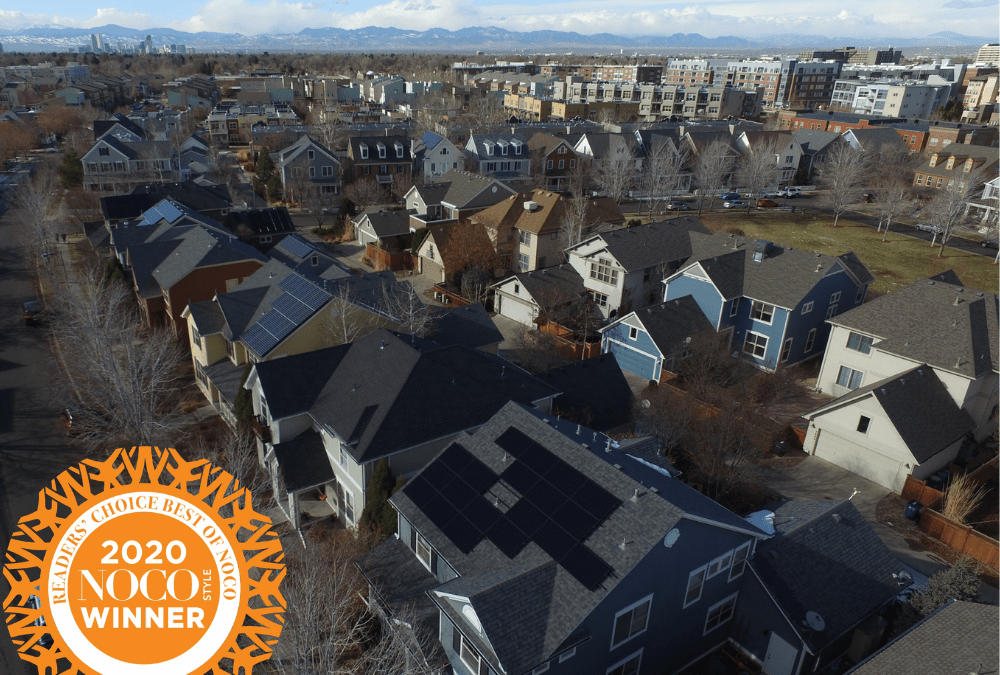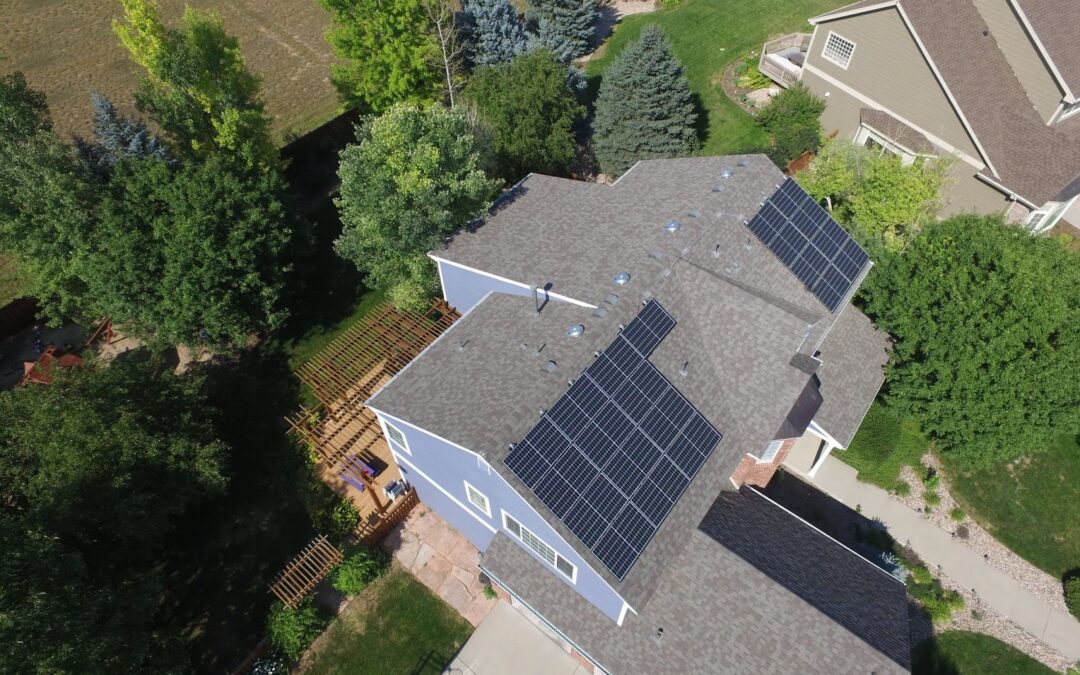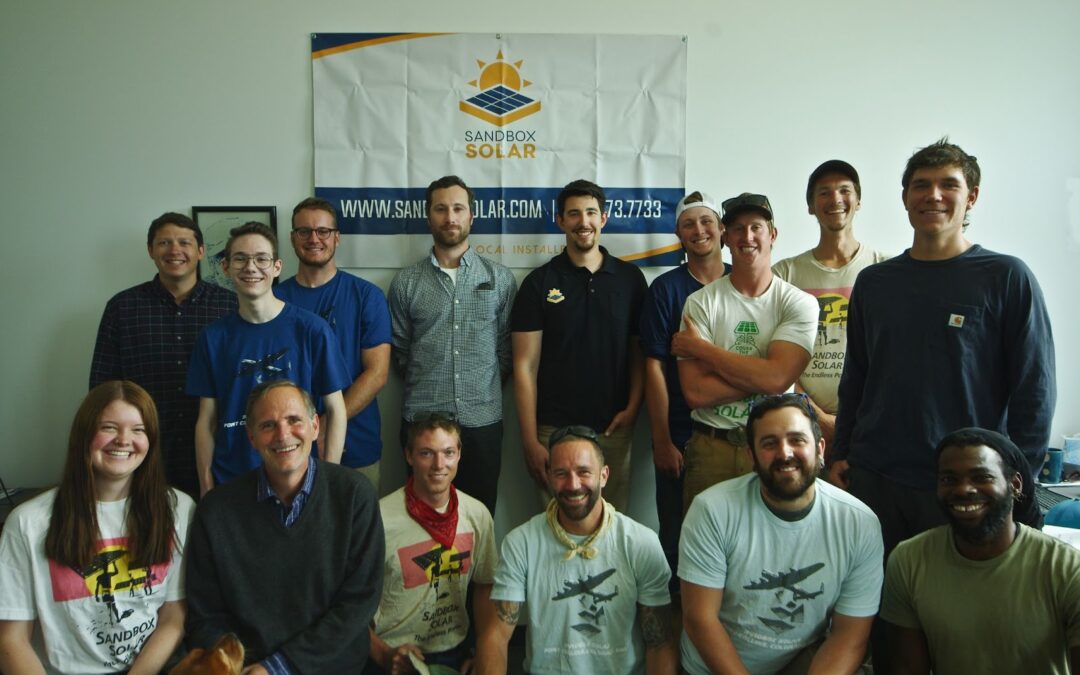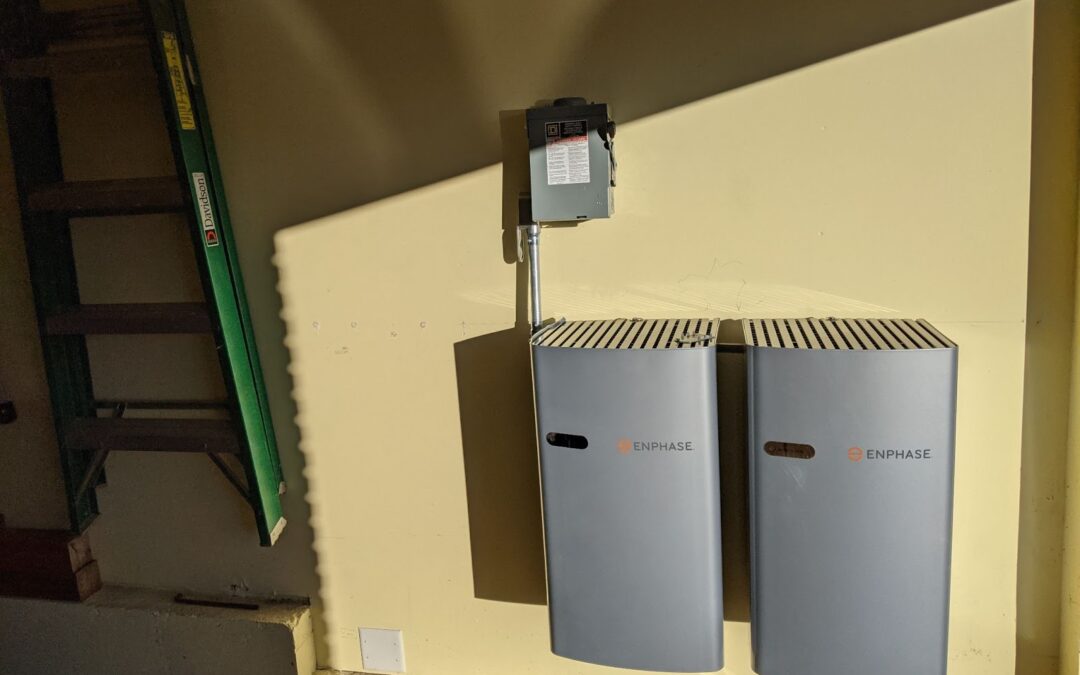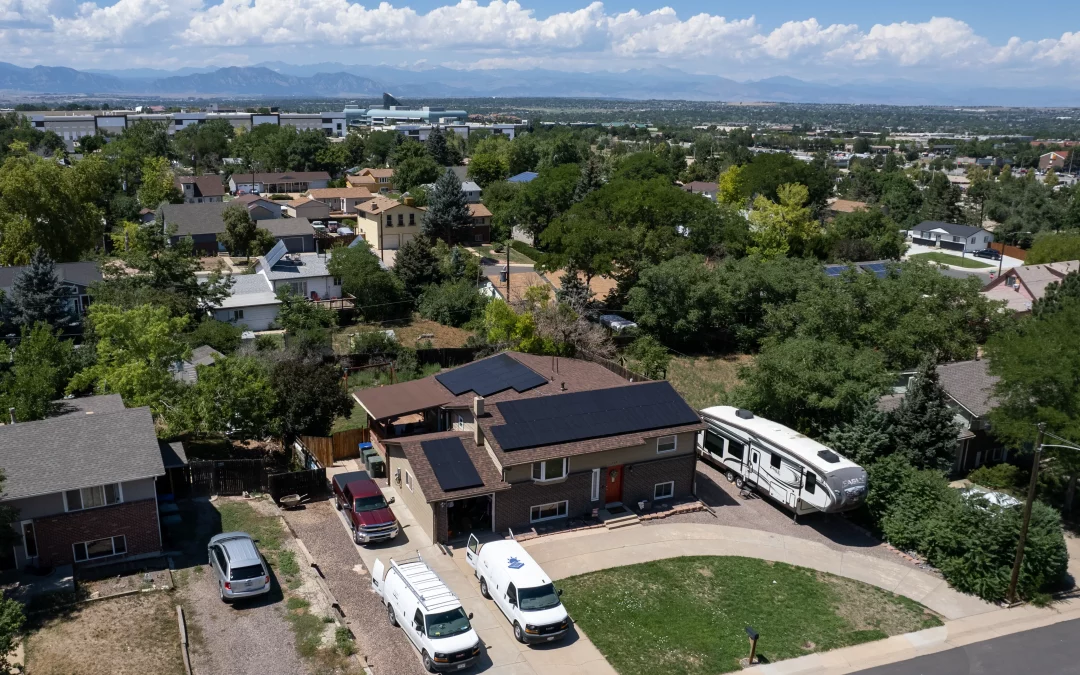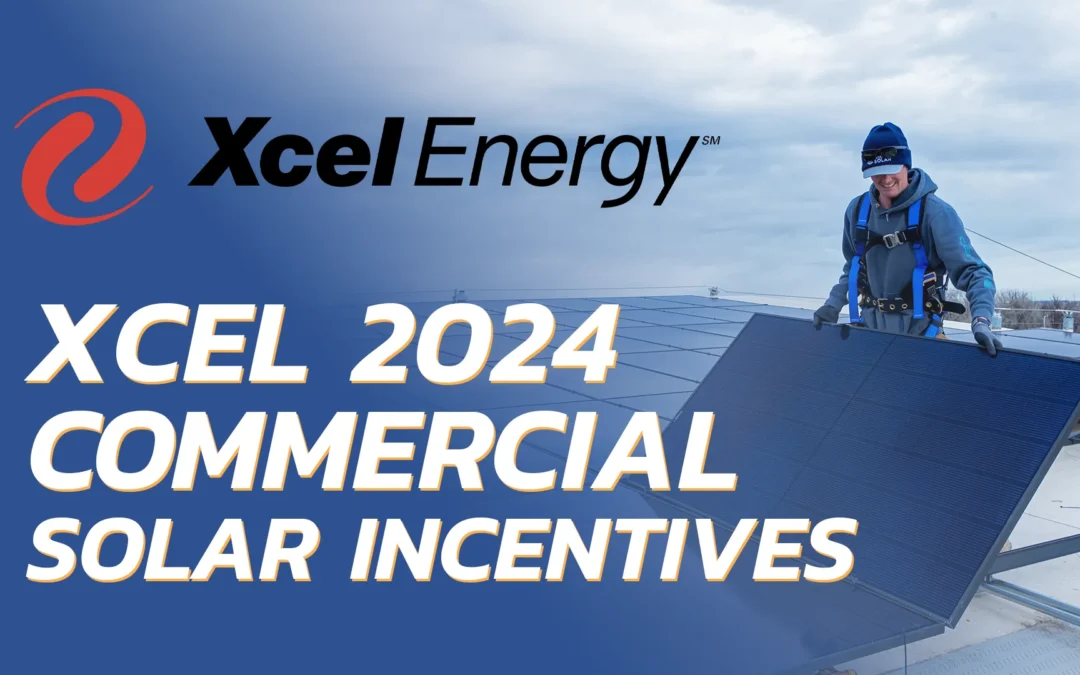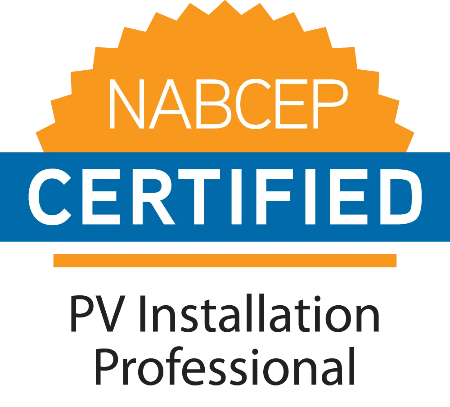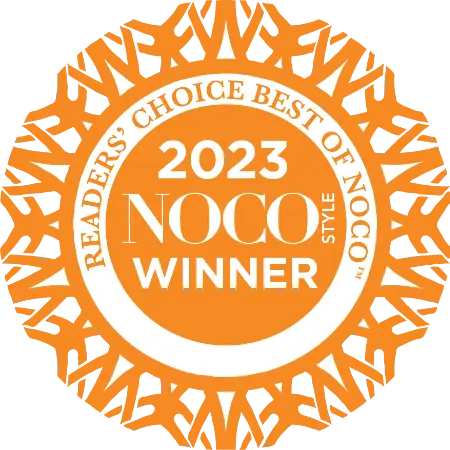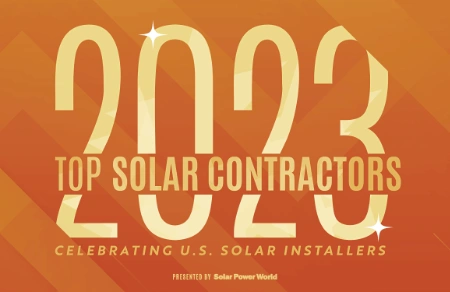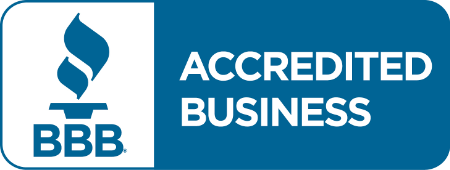Spring Hill Greens Agrivoltaics Case Study
Spring Hill Greens is the home of our latest Fort Collins agrivoltaics project. They grow microgreens for grocers across the state. We helped them develop an agrivoltaic solar project in 2022. Their goal is to be as carbon-neutral as possible. However, the issue is that they don’t have enough land to spare for a conventional solar array. To solve this problem, they contacted their local top solar company, Sandbox Solar!
Sandbox Solar is one of the few agrivoltaic companies in the nation specializing in agrivoltaic solar arrays. Agrivoltaics combine solar power with agricultural practices, which maximizes crop yields and minimizes solar land use. Spring Hill Greens believed our ability to collaborate with clients to develop unique solar arrays would suit their needs and more. We were extremely excited to take on this challenge and introduce our farmers to bifacial solar panel agrivoltaics.
Agrivoltaics is a new and growing market in the solar and agriculture industry. These techniques allow the solar industry to merge with agriculture to optimize land use, crop yield, and water usage. As solar energy grows, issues will arise, and agrivoltaics provides a viable solution!
Visit our Agrivoltaics page to learn more!
Traditional solar panels can only absorb sunlight directly from the sun, while bifacial solar panels can absorb sunlight from both sides. Not only can they absorb sunlight directly, but they also absorb reflected rays off the ground or other materials. We used this technology to construct a bifacial solar panel agrivoltaic array for a local farm in our community.
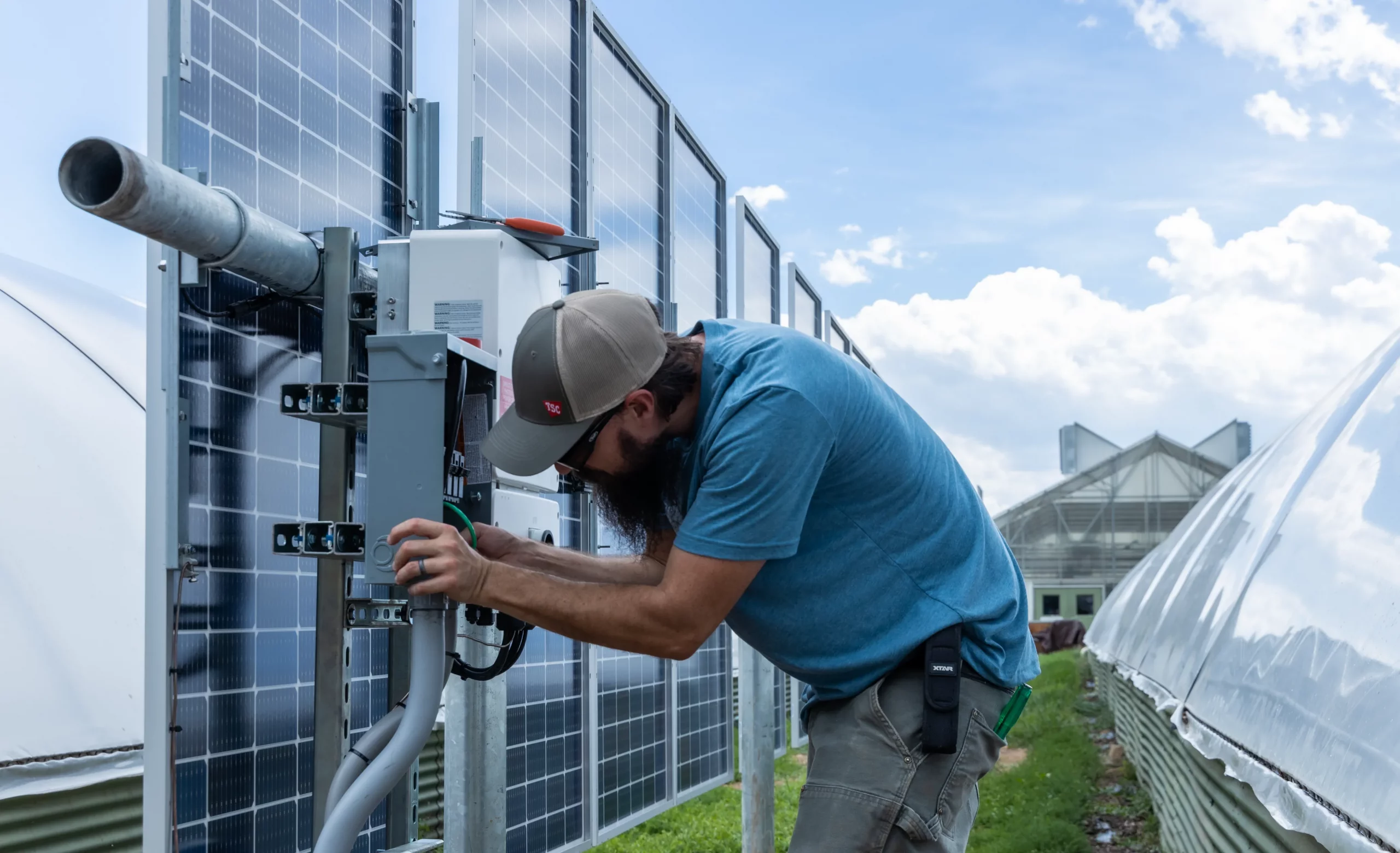
Bifacial solar panels are typically used in commercial or utility-scale applications, not your standard residential roof mount. However, as new markets like agrivoltaics emerge, Sandbox Solar is using these panels in new ways. Customers only have so much room for rooftop installations for large-scale projects and little room for ground-mount arrays. Solar contractors can utilize bifacial panels in many areas, such as solar pergolas, carports, fences, gardens, and more. Areas where sunlight can be reflected and absorbed by both sides of the panels throughout the day. They are allowing contractors to think creatively about how we can structure solar arrays that merge with their surroundings to optimize land use and benefit agriculture practices.
These bifacial panels present a whole new way of thinking regarding integrating solar energy into unique and complex situations. Its use in agrivoltaics is new to North America but is an exciting prospect for future solar challenges.
How did we solve solar land use issues with agrivoltaics?
Spring Hill Greens is a relatively large “Small Business,” and optimizing their land use was necessary for their growth. With the roof of their building already in solar use, dedicating a large land area for a solar ground mount was out of the question. That’s where our unique skills and experience in agrivoltaics provided the tools and knowledge to accomplish this fantastic project. Integrating solar with their agricultural buildings was the only viable solution for producing enough energy to power their farm.

How we did it:
- After surveying the farm, we recognized the greenhouses have UV-reflective film coverings. These coverings reflect UV solar rays outward to protect the plants growing inside.
- Between the greenhouses are land strips that our farmers can’t use for anything.
- Our agrivoltaic professionals realized this would be a perfect opportunity to implement cutting-edge bifacial solar panel technology.
- Sandbox Solar used the SPADE Agri-Solar Design Tool to model the irradiance on the panels from direct sunlight and albedo from the greenhouses to model production. The SPADE Tool also modeled the irradiance on the ground and in the greenhouses. This information showed how the plants in the greenhouse would continue to grow to their standard yield patterns. These practices would also reduce the greenhouses’ edge effect and evaporation of water.
- Finally, our mechanical engineering team worked with manufacturers to create a custom racking system. From there, we constructed a vertical bifacial solar fence between the greenhouses.
Check out SPADE Agrivoltaic Design Tool
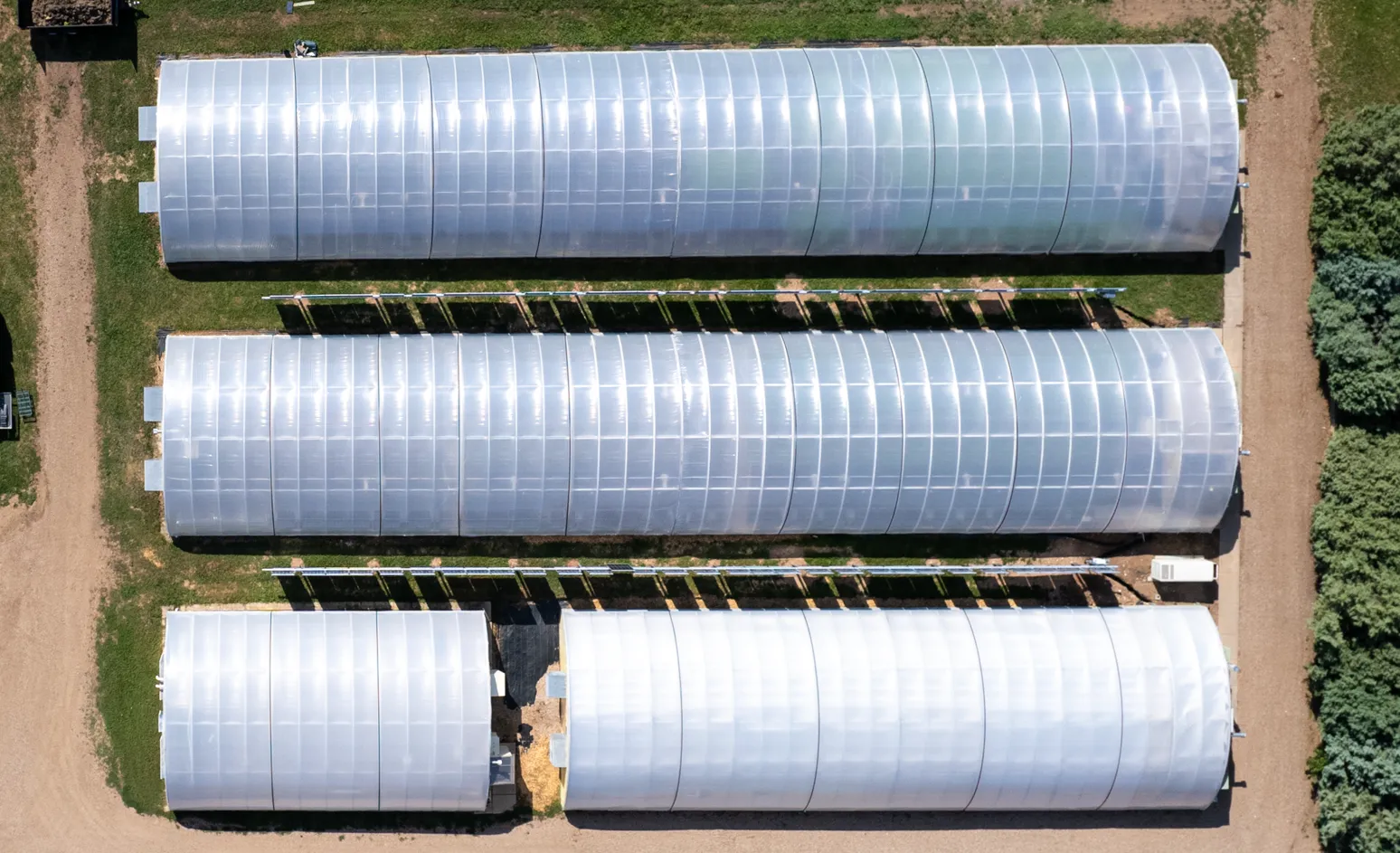
Thanks to our Agrivoltaic experts, we optimized unused space to generate renewable energy for our local farmers. By working harmoniously with agricultural practices, we developed a win, win, win solution. This Fort Collins agrivoltaics project is a stepping stone to finding long-term solutions for the solar land-use conflict while optimizing agricultural practices simultaneously.
*This project was installed in 2022. With time we will provide data sets based on this agrivoltaic array*

